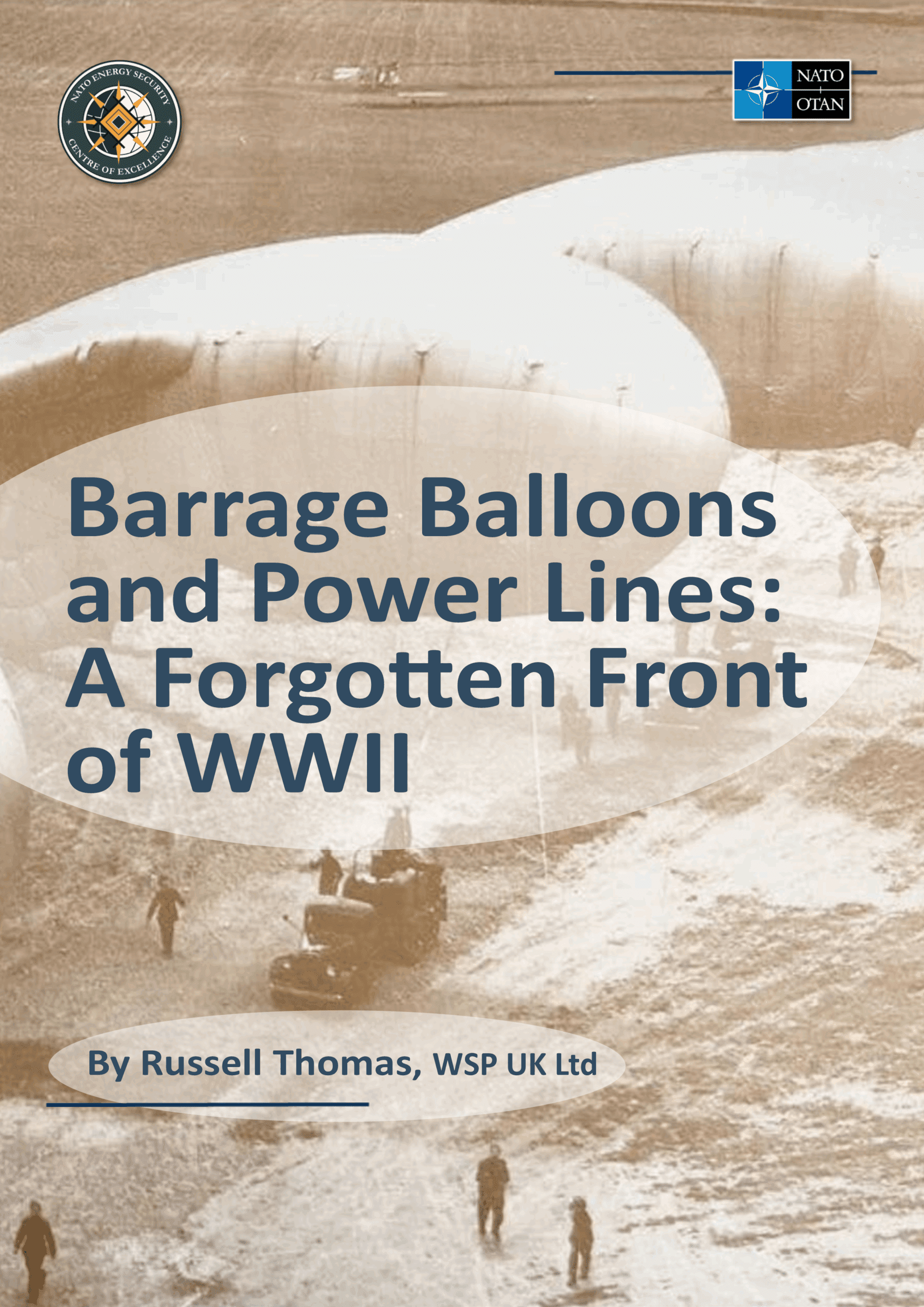
This article explores how barrage balloons, initially intended as a defensive measure, inadvertently revealed vulnerabilities in electricity infrastructure – ultimately turning into an unconventional offensive weapon.
The energy industry played a significant role in warfare in the First and Second World Wars. Of course, it provided the energy needed to power military operations and estates. But it also diversified into and intensified production of unexpected products & services. The British gas industry produced toluene (used in explosives), dyes (for uniforms), medicines, and motor fuels alongside its usual outputs. For its role in the war machine, the Gorleston gasworks was the target of the first airborne attack in the United Kingdom of the First World War, bombed by a German Zeppelin airship.
At the orders of military leaders, British gasworks also intensified production of hydrogen during the Second World War. The lighter-than-air gas was needed to fill giant balloons which could be deployed above civilian areas or operations for defence against air attack. However, they also had calamitous impact on electricity networks, something which was ultimately harnessed offensively. The history of barrage balloons provides a valuable case study on the mobilisation of industry, the protection of energy infrastructure, and unintended consequences.
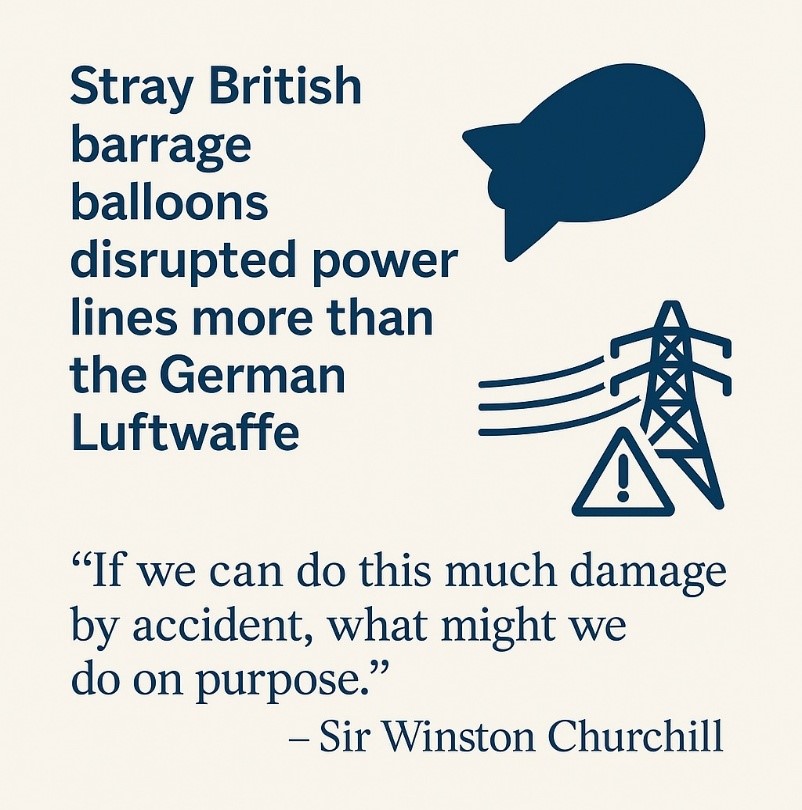
Mobilisation of Industry
The war effort required gasworks to increase hydrogen production to fill barrage balloons and enable their defensive deployment.
Barrage balloons were used in both World Wars, but it was perhaps the Second World War where they were most significant. Their main purpose was to ensure that enemy planes had to fly higher over cities and then were less accurate and at risk of colliding with the balloons or the steel cable attached to them if they flew beneath them. To harness this capability, an independent Balloon Command was established under Air Vice Marshall Sir Leslie Gossage in 1938. It became a sizable operation, with 52 operational squadrons flying about 5,000 barrage balloons, stationed right across Great Britain.
The balloons were silver in colour because the Egyptian cotton they were made from was covered with an aluminium powder. They were sizable at 64 ft. long and weighing around 600 pounds. They consisted of two compartments separated by a horizontal gas tight diaphragm. The upper compartment held hydrogen, and lower compartment was filled with air.
The gas industry in Great Britain played an important role in supplying gas to inflate these balloons and to supplement the production at chemical works in the North of England. Sixteen gasworks were chosen to supply additional hydrogen gas in locations ranging from Pontypool to Cambridge.
Hydrogen Plant in Torquay during WWII
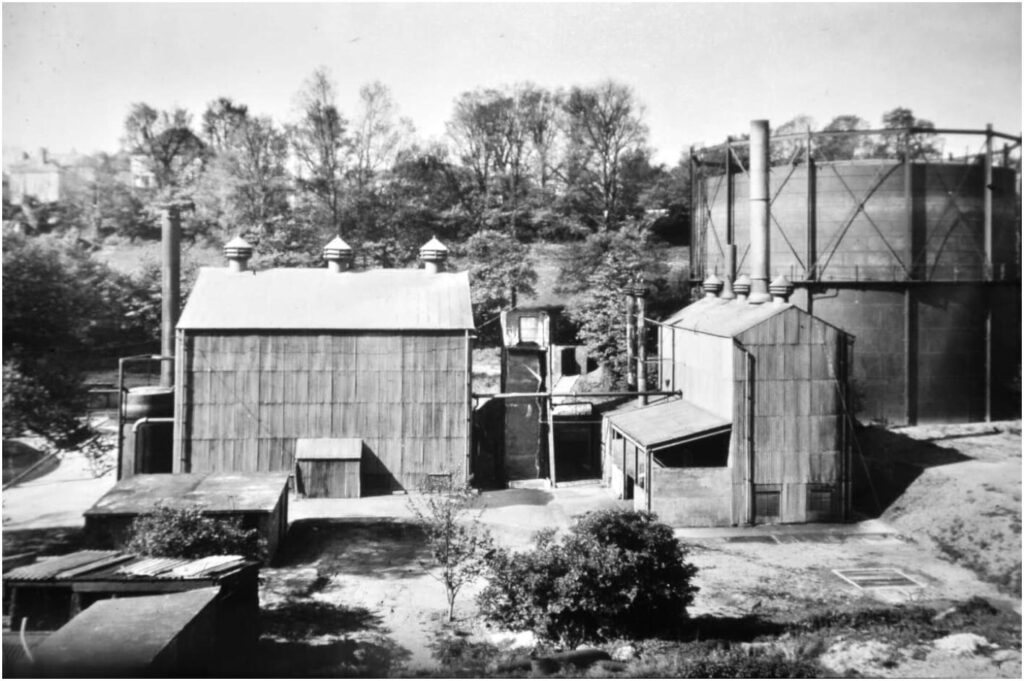
Image source: National Gas Archives
Barrage balloons were typically used in a defensive manner, being stationed over key cities, towns and strategic locations, flown at a height of 5,000 feet. They also played a key role in protecting the D-Day landings, seen below. The gasworks at Poole and Torquay produced most of the hydrogen required for the barrage balloons used in the D-Day landings. The picture below shows the 320th Barrage Balloon Battalion on Omaha Beach, an African American United States Army unit, flying its balloons at low altitude to prevent strafing of the beaches. Altogether about 4,000 balloon personnel, together with balloons and hydrogen, took part in the Normandy landings, transported across the English Channel to protect the artificial harbours, captured ports and ammunition dumps of the Allied forces. Lord Ashburton, Group Captain in charge of the operation wrote: “the one shortage that never hit us was lack of hydrogen.” A tribute indeed to those working at the gasworks, and the public partnership with industry to support the war effort.
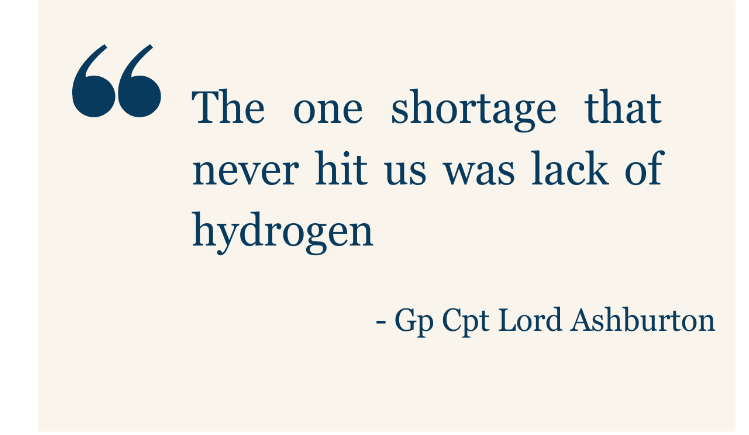

Barrage balloons over Omaha Beach at low tide, first few days after D-Day, June 1944
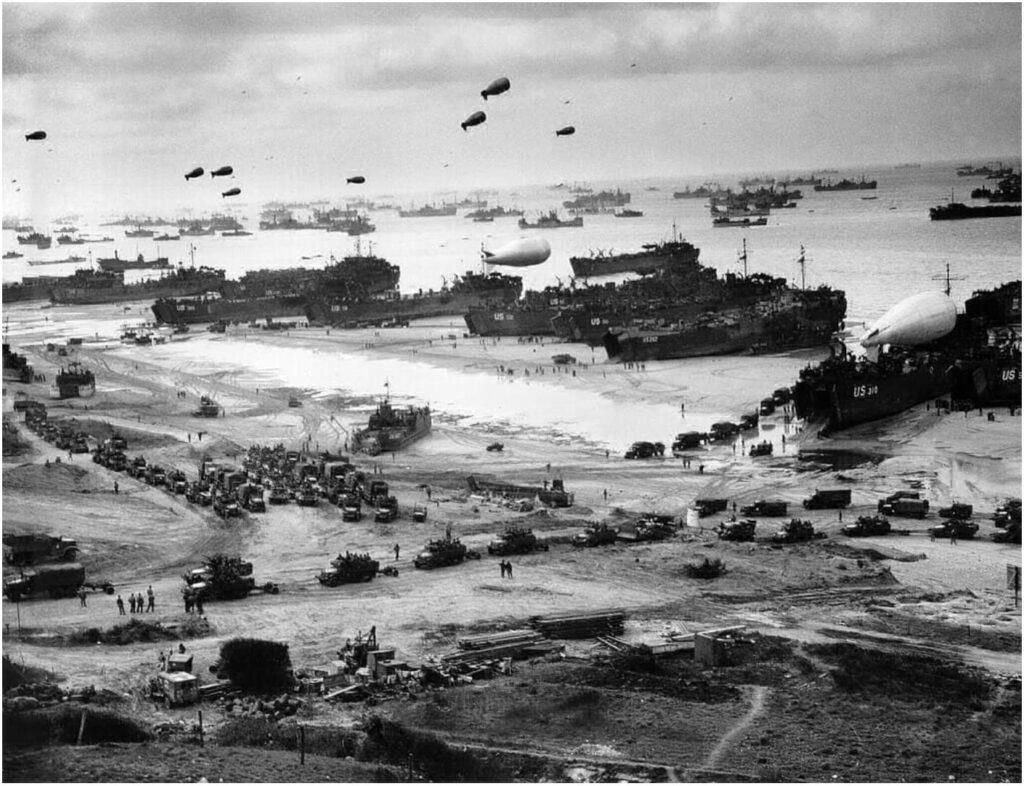
Image source: https://en.wikipedia.org/wiki/Barrage_balloon, Wikipedia Commons. Public Domain.
Calamitous Mistake to Offensive Capability
As the destructive potential of barrage balloons became clear, British military planners adapted them into a low-cost weapon to target enemy infrastructure.
However, while the gas industry was mobilised to produce the hydrogen required for the balloons, the electricity industry was the unwitting recipient of the unintended damage they could cause. Stray barrage balloons were reported to have caused more damage to the electricity infrastructure in the UK than the German Air Force did during the war. The main cause of disruption was the steel tether cables attached to the balloons: when these long, conductive wires came into contact with overhead power lines, they could cause short circuits, arcing, and mechanical breakage of insulators and cables. It was also possible for the balloons themselves became entangled in transmission towers, adding weight and tension that can led to structural collapse or line sagging. Supposedly, officials could even plot the course of balloons that had detached from their moorings by following the trail of blackouts and damaged substations across the grid. Ultimately, the Royal Air Force was dispatched to shoot them down to avoid further disruption and restore some measure of control over the electrical network.
From the start of the Second World War Air Vice Marshal E L Gossage, received a constant string of complaints from the electricity distributers regarding the damage done across Great Britain by stray barrage balloons. He went on to suggest that “advantages might be taken of this to impede and inconvenience the enemy.” When Winston Churchill, learned of the chaos they caused he said “if we can do this much damage by accident, what might we do on purpose.”
He immediately directed that the use of free flying balloons as a means of attacking Germany should be investigated, and the military were then tasked with planning for their use in an offensive capacity. Whilst the Air Ministry was reluctant to get involved, the admiralty was supportive. They were relatively cheap and did not risk any service personnel. It was well known that the design of the German power network made it vulnerable to damage by short circuit; the aim was to use the balloons to disrupt electrical systems in occupied Europe. The balloons would be equipped either with steel wires beneath them to damage power cables or armed with incendiary devices to cause fires in woodland.
Correct and accurate weather knowledge was required since balloons would only go where the wind would take them; they were in effect unguided weapons which could do indiscriminate damage. Planners determined, however, that the winter winds above 16,000 feet blew towards the continent and would be the best option to carry the balloons in the desired direction. Different types of balloons were used for offensive purposes than the defensive barrage balloons. Simpler models were made from latex, filled with hydrogen and fitted with a simple fuse system to control height and flight duration. They also dragged a 300 ft. section of 15-gauge steel piano wire.
These offensive balloon launches started in March 1942, from the east and south east coast of Great Britain. At the operation’s height, over 1,000 balloons were released per day. Whilst they inflicted significant damage to German infrastructure, national representative did not comment. The neutral countries of Sweden and Switzerland, however – who were also in the path of these balloons – complained bitterly through diplomatic channels of the considerable damage they caused to their overhead electricity lines.
Ultimately, the story of barrage balloons in the Second World War highlights the importance of co-ordinated planning between the military and civil sectors to avoid harmful unintended consequences. Moreover, it is clear that flexibility and responsiveness of industry played a major role in meeting evolving demand and enhancing capability.
Four Lessons from the Barrage Balloon Campaign
1. Energy Infrastructure Has Been and Will Continue to be a Target
The vulnerability they exposed at home swiftly led to their repurposing as weapons abroad.
This gives us an archetypal example of the need to harden physical protection of energy infrastructure against the full range of threats. Today, this extends to cyber.
2. Industrial Capability Can Enhance Security
The success of British gasworks’ rapidly scaling hydrogen production underscores the value of flexible, responsive industrial capacity in national resilience.
3. The Importance of Civil-Military Coordination
Tensions between military and civil institutions (e.g., over balloon-caused outages) highlight the need for holistic planning and clear lines of communication.
4. Dual-Use Technology
Tools designed for one purpose, such as defence, can have unforeseen applications. Modern parallels include AI, drones, and cyber tools that can be misused.